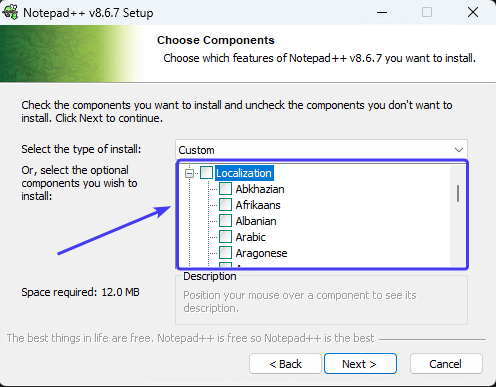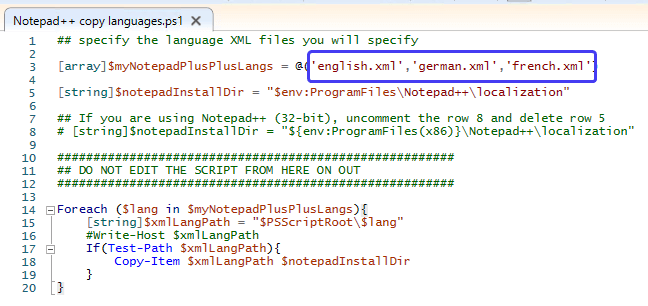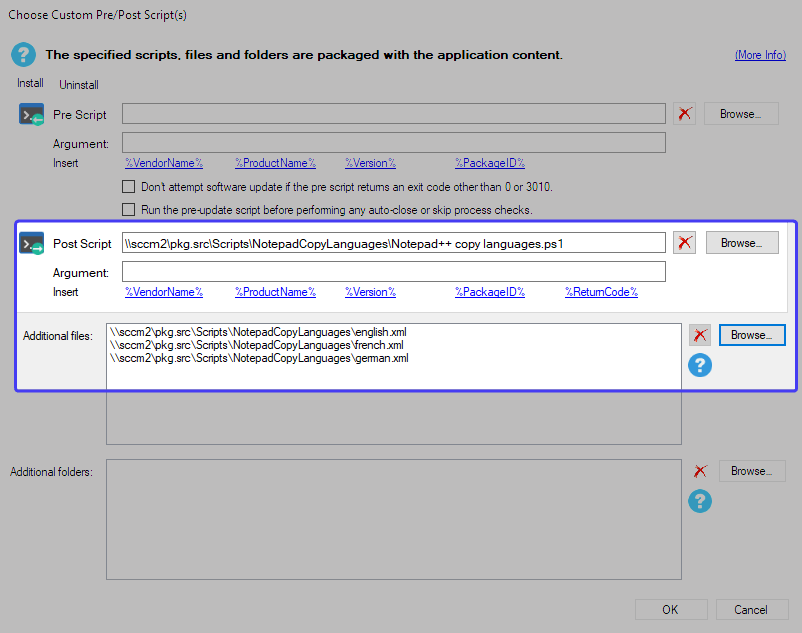How to install additional Notepad++ display languages with Patch My PC
If you want to deploy Notepad++ in your organization on your managed devices,and would like to also install additional Display Languages during the unattended installation, follow this guide.
At the time of writing this article, the Notepad++ installer does not support any parameters that will allow you to install additional languages.
1. Download the Notepad++ installer and run the installation manually.
2. Click through the wizard until you get to the Components section.
3. Select the languages you would like to deploy:
In today’s example, we chose English (included by default), German, and French.
4. Proceed with the installation.
5. Once you installed the app, go to the installation directory.
In my case, I installed the 64-bit version, so I went to: “C:\Program Files\Notepad++\localization“.
6. Copy these files to your desktop, they will be used later.
7. Save the script lines below as a .ps1 file.
## specify the language XML files you will copy using the script (the ones on your desktop)
[array]$myNotepadPlusPlusLangs = @('english.xml','german.xml','french.xml')
[string]$notepadInstallDir = "$env:ProgramFiles\Notepad++\localization"
## If you are using Notepad++ (32-bit), uncomment the row 8 and delete row 5
# [string]$notepadInstallDir = "${env:ProgramFiles(x86)}\Notepad++\localization"
#######################################################
## DO NOT EDIT THE SCRIPT FROM HERE ON OUT
#######################################################
Foreach ($lang in $myNotepadPlusPlusLangs){
[string]$xmlLangPath = "$PSScriptRoot\$lang"
#Write-Host $xmlLangPath
If(Test-Path $xmlLangPath){
Copy-Item $xmlLangPath $notepadInstallDir
}
}LEGAL DISCLAIMER
The PowerShell script provided is shared with the community as-is
The author and co-author(s) make no warranties or guarantees regarding its functionality, reliability, or suitability for any specific purpose
Please note that the script may need to be modified or adapted to fit your specific environment or requirements
It is recommended to thoroughly test the script in a non-production environment before using it in a live or critical system
The author and co-author(s) cannot be held responsible for any damages, losses, or adverse effects that may arise from the use of this script
You assume all risks and responsibilities associated with its usage
8. Edit row in the script and give the name of the XLS files you have on your Desktop.
9. Copy the ps1 script as well as the XML files on the server hosting the PMPC Publisher Console and save them in a location they won’t be accidentally deleted.
10. Open the PMPC Publisher Console, right-click on Notepad++ (64-bit), and choose the “Add custom pre/post scripts” right-click option.
11. Specify the ps1 file as a post-install script, as well as your files, as shown in the screenshot:
12. Run a sync to publish Notepad++ (64-bit). Make sure to test before a global rollout.
Note: By following this guid, you will only install the DisplayLanguages. Users then be able to choose the Display (Localization) language from the Notepad++ app –> Settings menu –> Preferences.
This specific setting is specific to each user profile and can be set by creating/modifying this XML: %appdata%\Notepad++\nativelangs.xml. More info here.
Given ConfigMgr / Intune runs the installation as the SYSTEM account, if you aim to modify the file with a script, you will have to create one that takes into account all user profiles.


